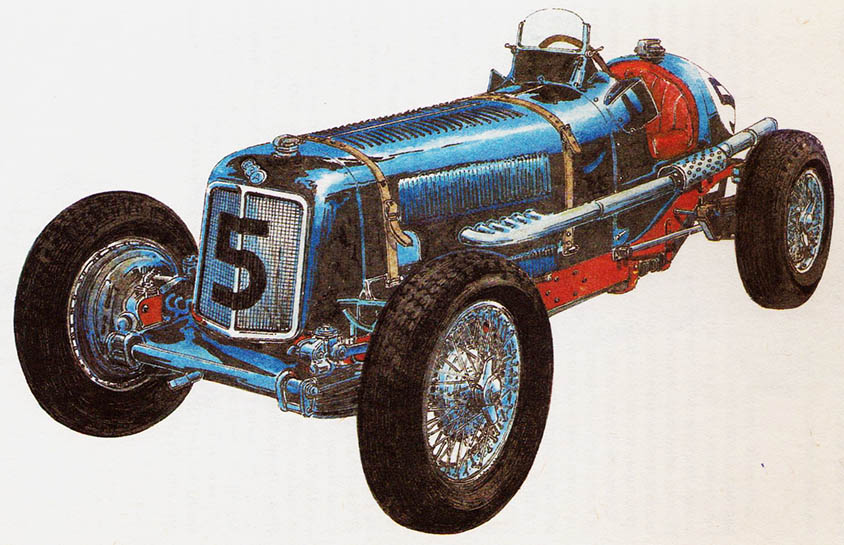WAS B – year 1935
English Racing Automobiles Ltd. Lincolnshire, Bourne, United Kingdom.
The idea of building an English racing car occupied Raymond Mays for a long time, who has made friends for this cause – Amhersta Williersa, aviator Peter Berthon and player Humprey T.. Cook. Thus, in 1934 ERA was established in the year (English Racing Automobiles Ltd). In the first car, a six-cylinder Riley engine was used, improved by adding the Murray-Jamieson-Roots compressor, making it with capacity 1,5 liter power was achieved 110,4 kW (150 KM) by 6500 RPM. The first car, named ERA A, he was developing a speed of approx 200 km/h.

English Racing Automobiles Ltd. Lincolnshire, Bourne, United Kingdom.
W 1935 Model B was built in the year. The six-cylinder supercharged engine had a cylinder diameter 57,4 mm and piston stroke 95,2 mm, which gave a displacement 1480 cm3. A Roots compressor inserted between the carburetor and the engine compressed the mixture to 200 kPa. The lower camshaft valve train had camshafts on both sides of the engine block. The crankshaft was mounted in three bearings, the middle of which was rolling, and the rest are sliding. Oiling of the so-called. dry sump required a double suction-delivery oil pump. Ignition took place with the aid of a magneto. It was interesting to use a four-speed gearbox, planetary gearbox from Wilson with preselector. The engine reached its maximum power 128,8 kW (175 KM) by 7000 RPM. Rigid bridges are suspended on longitudinal semi-elliptical springs. Driving and braking forces were transmitted in the posterior pillar through the vagina, in which the articulated connecting shaft was mounted. The front axle was additionally guided by longitudinal rods. The chassis was made of a longitudinal frame made of U-sections. Mechanical brakes acted on all wheels. Girling brakes use wedges to spread the jaws instead of ball spreaders. An empty car with a relatively high monoposto body had a mass 630 kg and developed speeds of over 200 km/h.
Overall done 13 cars in versions A and B. Many famous competitors have driven ERA cars. British driver Seaman took a decisive victory at the Czechoslovakian Grand Prix in Brno in 1935 year in the car capacity class below 1,5 liter. It then reached an average speed 114,7 km/h, he set a track record with an average speed of one lap 120,83 km/h, defeating Bugatti and Maserati cars.